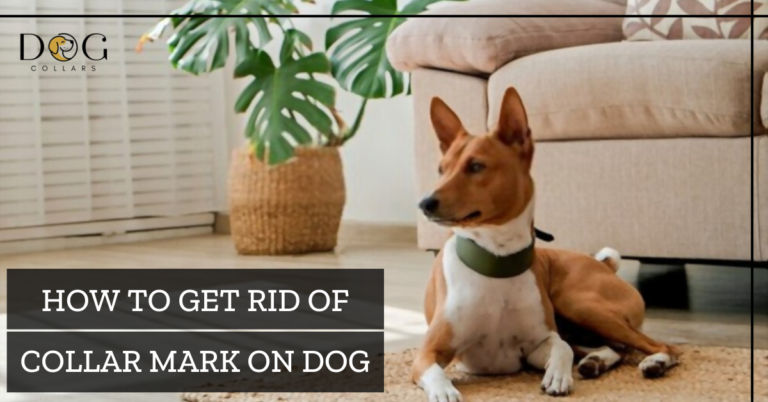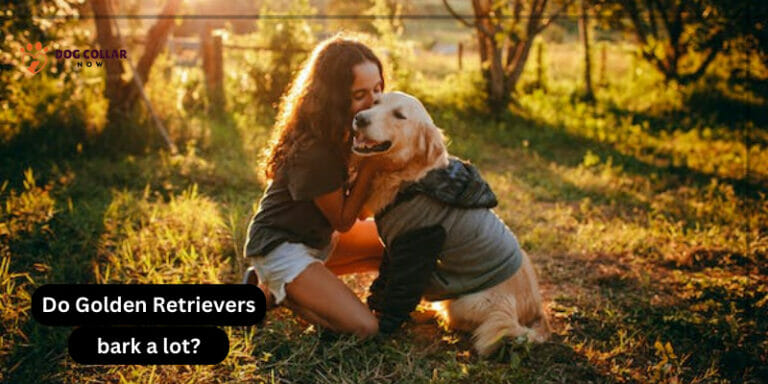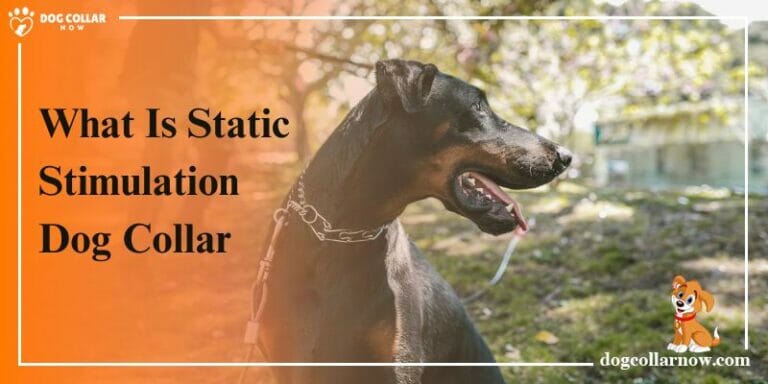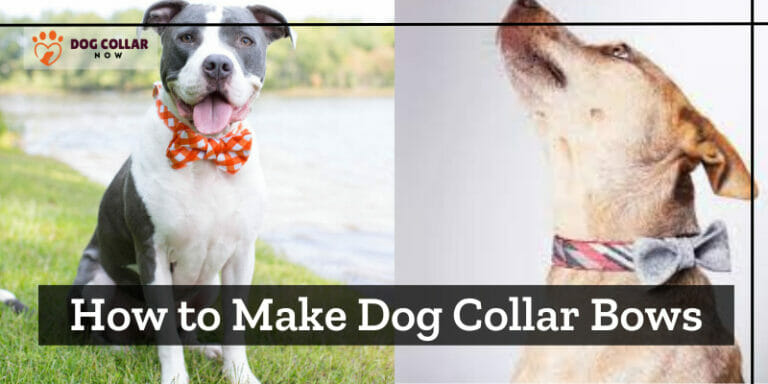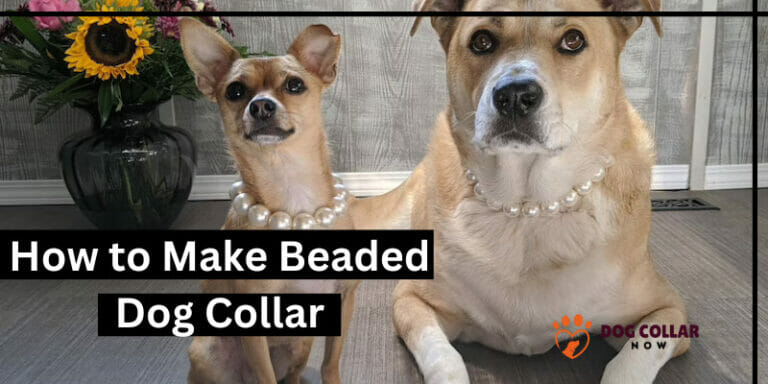How To Make A Blind Dog Bumper Collar – 7 Uncomplicated Methods
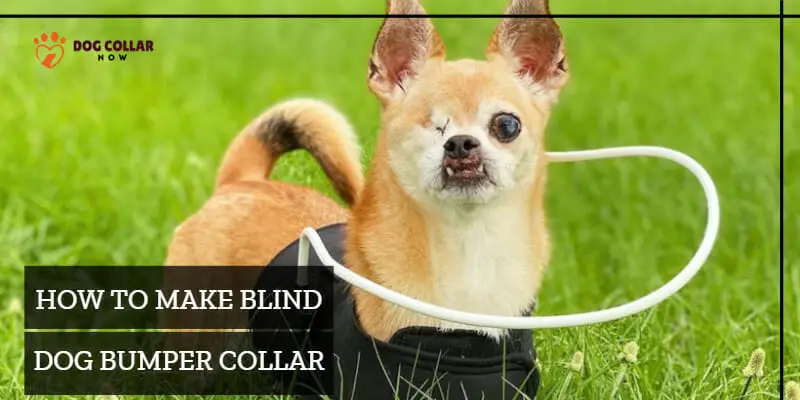
Having a blind dog can be challenging for both the owner and the pet itself. But worry not “Enhance Your Blind Dog’s Safety and Comfort with a Custom-Made Bumper Collar!”
The collar provides a cushioning effect, absorbing the impact if the dog runs into something.
To make a blind dog bumper collar, you will need a harness or strap as the base and hanger strap or webbing tape for the bumpers, ensuring secure attachment for your furry friend’s safety and comfort during walks.
By following these easy steps, you can easily understand how to make a blind dog bumper collar and provide your less sighted dog a safer and more comfortable environment while also strengthening your bond with them.
Material Needed
To make a bumper blind collar for your dog, you will require some materials that are easily accessible.
- Harness/Strap
- Hanger strap/Webbing tape
- Holes
- Scissors
- Measuring tape
How To Make A Blind Dog Bumper Collar – Step By Step Guide
Creating a bumper collar for your sightless dog is easier than you think. With the right elements and some patience, you can make a collar that is suitable perfectly and keeps your furry friend safe and comfortable on strolls.
Step 1- Prepare The Base
- Attach the harness or strap securely around your dog’s neck.
- Ensure it is sized comfortably and doesn’t cause any discomfort.
Step 2- Measure And Cut The Bumpers
- Take the hanger strap or webbing tape and measure the desired length for each bumper.
- Use the measuring tape to ensure accurate measurements.
- Cut the strap with scissors accordingly.
Step 3- Create Attachment Points
- Make holes at both ends of each bumper piece.
- These holes will be used to attach the hanger strap /bumpers securely to your dog’s harness.
Step 4- Attach The Bumpers:
- Thread one end of each bumper through the holes in the harness or strap.
- Ensure a snug fit and secure attachment for each bumper.
Step 5- Check For Safety:
- Before allowing your sightless dog to wear the bumper collar outside, double-check that all pieces are securely attached.
- Make sure there are no loose ends or potential hazards.
Step 6- Test And Adjust:
- Gently guide your sightless dog indoors to see how they respond to the bumper collar.
- Observe their movement and comfort level.
- If necessary, make any adjustments to confirm a properly sized and optimal functionality.
Step 7- Enjoy Safe Adventures:
- Once you’re confident in the bumper collar’s size and effectiveness, take your sightless dog for strolls and outdoor activities.
- Be amazed at how this customized collar enhances their mobility, giving them confidence and protecting them from obstacles.
Remember, this homemade bumper collar is designed with love and care specifically for your sightless dog’s needs. Enjoy the journey of creating a safer and more fulfilling life for your furry companion!
Tips & Suggestions for Making a Safe Bumper Collar
When making a bumper collar for your blind dog, safety should always be a top priority. Here are some tips and suggestions to verify that you create a safe collar.
Measure The Neck:
Use a soft tape measure to measure your dog’s neck circumference accurately. Wrap it around the base of their neck, just above the shoulders. Remember to add an extra inch to the measurement to verify a comfortable size.
Choose Comfortable Materials:
Opt for soft padding or cushioning elements to line the inside of the collar. This helps protect your dog’s skin from any potential irritation or rubbing. Additionally, consider using reflective materials on the outside of the collar to enhance visibility, especially during walks in low-light conditions.
Ensure Ventilation:
Allow for proper airflow and ventilation by leaving enough space between each piece of elements in the collar. This prevents excessive heat or discomfort for your furry friend, especially during long walks.
Verify For Secure Attachment:
Regularly inspect the straps, hangers, and attachments to assure they are securely fastened. Loose or weak attachments can pose safety risks, so make it a habit to verify the collar’s integrity before each use.
Gradual Training:
Introduce the bumper collar to your dog gradually, giving them time to adjust and get used to wearing it during walks. Start by having them wear the collar for short periods in a familiar environment, gradually increasing the duration and introducing it during walks.
By following these tips, you can create a custom sightless dog bumper collar that is sized comfortably, protects your dog’s skin, enhances visibility, promotes proper ventilation, and confirms your furry friend’s safety and comfort during walks.
Tips for Choosing the Right Size of Blind Dog Bumper Collar
Choosing the right size of the collar is crucial for your furry friend’s safety and comfort. Here are some tips to help you determine the perfect size:
1- Measure Neck Circumference:
Use a tape measure or string to measure your dog’s neck. Wrap it around the base of their neck, just above the shoulders. Add an extra inch for comfort and to confirm it’s not too tight.
2- Check Front Strap Placement:
Verify the front strap of the collar sits comfortably behind your dog’s ears, without putting pressure on them. It should rest snugly against the back of their neck.
3- Proper Hanger Strap Position:
The hanger strap, which holds the bumpers, should fall in front of your dog’s chest. It should be positioned just below the throat area, without rubbing against their skin. This prevents any discomfort or irritation.
4- Snug But Comfortable Fit:
The bumper collar should be sized snugly around your dog’s neck without being too tight. You should be able to fit two fingers between the collar and the neck. This allows for proper mobility and prevents any choking hazards.
5- Secure Leash Ring Attachment:
Verify that the leash ring on the collar is securely attached. It should be able to withstand the pulling force of the leash without coming loose. Additionally, make sure there is enough space around the ring for easy attachment and detachment of the leash.
6- Choose Breathable And Durable Materials:
Consider using materials that provide good ventilation for your dog’s comfort. Look for lightweight and breathable fabrics or webbing. Ensure the materials are durable enough to withstand your dog’s activities and potential wear and tear.
By following these tips, you can choose the right size collar that sized your furry friend comfortably, enhances their safety during walks, and is made from materials that prioritize their comfort and durability.
Alternatives To Making A Blind Dog Bumper Collar
If creating a blindness aid collar isn’t feasible for you, don’t worry! There are alternative options available to enhance your furry friend’s safety and mobility during walks.
Ready-Made Bumper Collars:
Look for commercially available bumper collars designed specifically for sightless dogs. These collars are often adjustable, padded, and equipped with protective bumpers to help your dog navigate obstacles safely.
Dog Harness With A Handle:
A harness with a sturdy handle on the back can provide you with better control and support while guiding your sightless dog. The handle allows you to assist them when encountering obstacles and helps maintain their balance.
Guide Dog Harness:
Specially designed Guide dog harnesses to provide stability and assistance to visually impaired dogs. They typically feature a comfortable harness with a sturdy handle that you can use to guide and direct your furry friend.
Use A Leash Extension:
Consider attaching a leash extension or a longer leash to your dog’s regular collar or harness. This will provide them with a bit more freedom to explore while still ensuring you have control and can guide them as needed.
By exploring these options and seeking professional advice, you can find the best solution to help your four-legged companion enjoy their outdoor adventures to the fullest.
Conclusion
Creating a blind dog bumper collar doesn’t have to be daunting. With a few simple materials you can craft a collar that enhances your blind dog’s safety and mobility during walks.
Remember to measure accurately, ensure secure attachment, and choose materials that provide comfort and durability.
So, let your creativity flow, put those crafting skills to use, and embark on the journey of how to make a blind dog bumper collar that will bring joy and freedom to your blind dog’s daily walks.
FAQs
What is a blind dog bumper collar?
A blind dog bumper collar is a DIY collar that protects the dog from bumping into things they can’t see. It’s also known as a “halo” or a “bumper collar”.
What factors should I consider when making a DIY blind dog bumper collar?
You should consider the weight of the collar, the shape of your dog’s head, and the items around your house that your dog might bump into.
How do I shape the collar?
You can use any round item that is big enough to create a halo shape. Try to avoid using something that your dog could get caught on, like furniture or a fence.
How do I attach the bumper to the harness?
Mark where you want to place the bumpers on the harness and drill a hole on each side of the harness. Then, place the bolt through the hole, add a washer, and secure the nut on the other side.
How do I attach the bumper to the collar?
Once you’ve shaped the bumper collar, drill holes on each side of the collar, and attach it to the harness using bolts, washers, and nuts.
How do I make sure the bumper collar stays in place?
The bumper collar should be center mounted on the harness, with the bumpers facing forward. Use the weight of the harness to help keep the bumper collar in place.
What precautions should I take when making a DIY blind dog bumper collar?
Be careful when drilling and hammering, and avoid using too much force. Make sure you work on a stable surface, like a worktable or a wall. Also, make sure to have the right amount of items necessary to get your job done.

